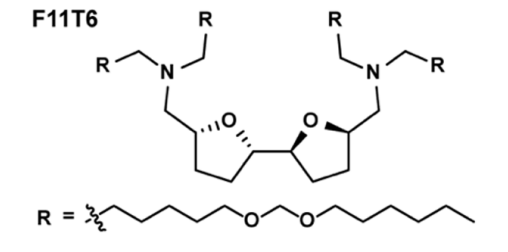| Cas No.: | |
| Chemical Name: | Lipid F11T6 |
| SMILES: | CCCCCCOCOCCCCCCCN(CCCCCCCOCOCCCCCC)C[C@H]1CC[C@@H]([C@@H]2CC[C@H](CN(CCCCCCCOCOCCCCCC)CCCCCCCOCOCCCCCC)O2)O1 |
| Formula: | C66H132O10N2 |
| M.Wt: | 1113.79 |
| Purity: | 98% |
| Sotrage: | 2 years -20°C Powder, 2 weeks 4°C in DMSO, 6 months -80°C in DMSO |

 To enhance service speed and avoid tariff delays, we've opened a US warehouse. All US orders ship directly from our US facility.
To enhance service speed and avoid tariff delays, we've opened a US warehouse. All US orders ship directly from our US facility.




















